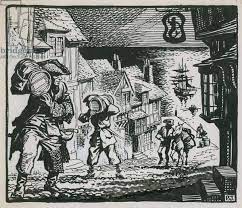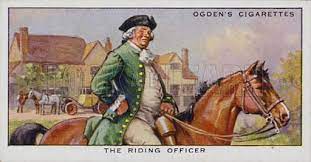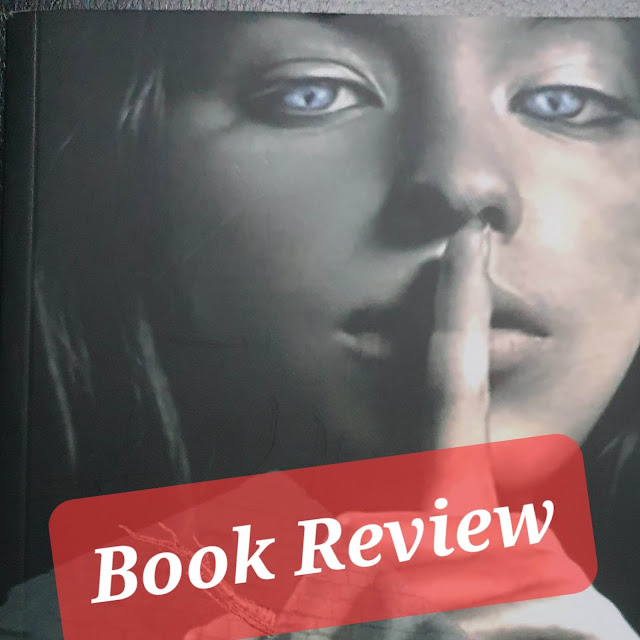The Hawkhurst Gang Season 1 Episode 1.
The Hawkhurst Gang Season 1 Episode 1.
The 18th century made for a hard life and arguably, the Civil war made no material difference to working families as they remained poor and isolated, usually tied to an area for labouring purposes. There was no welfare state to take care of these families. If you were poor you were poor ! The smuggling gangs (or free traders) offered relief for all. For example, a tub-man could earn more money than his day job walking overnight contraband to a tavern. The said tavern could then sell that contraband with no tax paid and enhance its profit to customers in need of a beverage. The big profits of course went to the financiers and city merchants in London who also were slave traders and the wealthy, what could be described today as the the elite and richest one per cent. Some of those families and companies exist today and it is worth mentioning they are still very good at avoiding tax ! Smuggled goods where accessible to the poor, such as tea, lace and silks as continental Europe was closer to Sussex and Kent with only a few hours sailing away as opposed to a three day stage coach ride to London because of the poor state of the roads. In fact it was quicker to sail to London. It is understandable why smuggling and the gangs attracted protection from the local communities through silence as the gangs provided for the poor. However, violence was used as enforcement and once that reputation was established it was enough to keep your own version of law and order. The Hawkhurst gang were proficient in enforcement of their own law and order.
"Smugglers would spread rumours of paranormal activity....."
"Smugglers would spread rumours of paranormal activity....."
It's helpful to mention and put into context the issue around taxation.Many Historians rightly justify that the tax burden on the population was to pay for the wars of the period such as the war of Jenkins Ear 1739 (Spain and the West Indies), 1740 to 1748 the war of Succession and in 1744 the threat of invasion from France. A good example of how much tax was levied on goods, was tea. Tax on tea was one hundred and nineteen percent. The tax was reduced to twelve point five percent in 1784. Tax was also used to maintain the rich and powerful such as the monarch paid zero tax.The wars financed the rich slave traders who expanded their interests. Taxation was made on the poor for places far away that they probably had no interest in or knowledge of what the wars were for.
By 1740, The Hawkhurst gang or the Seacox gang were infamous across Kent, Sussex, (later Hampshire and Dorset). They were named after a village in Kent called Hawkhurst conveniently located fifteen miles from the coast. Seacox was their first name as Seacox heath is located in Hawkhurst. To the reader the Hawkhurst gang could easily be an 18th century comparative to the Sopranos with their slick distribution operation and ruthlessness in disposing of their foes. The Hawkhurst gang had a chain of command similar to the Sicilian Mafia. They worked and co-operated with other gangs, but they had the serious muscle in the south east region.Nothing compared to them. In comparison Dorset gangs where a lot smaller. The Hawkhurst gang had a Don/Boss ( Arthur Gray), a Consigliere/Counsel (William Gray) and an under Don/Boss (Thomas Kingsmill). They had Capo/Captain to assist in managing the five hundred workforce and distribution network such as William Fairall, William Carter, Benjamin Tapner, John Cobby and John Hammond. There was enough to go round for everyone (all the gangs). They had no respect for the law or authority, the only respect they held was for money ! There was no diplomacy if things did not go their way only violence.
Once unloaded from ships and boats, the tub men would quietly be on their way, probably locally with a payment to be made on delivery and maybe a hot meal. The pack horses and carts would continue the 'run' as convoys under armed protection in the night. The journey to long distance locations further up county in Kent, Surrey, Sussex and London were carried out in stages. So the gangs would have to move contraband to safe places to store, replenish water and food for horses or indeed meet another party to exchange loads. All this overnight.
In the 1730's the Hawkhurst gang used a network via Hawkhurst Village. Learning from contemporary sources Hawkhurst itself and Goudhurst were used as staging posts. The leaders of the gang all owned properties in these villages and it is believed they had them built or modified to store contraband as part of the network of distributing the goods or when the local authorities were patrolling the vicinity.The gang leaders such as Arthur Gray built his house, 'Gray's Folly'(now demolished) and used Hawkhurst Place. Hawkhurst Place was said to have a tunnel linking it to Island Pond and Tudor Hall was supposed to be linked by a tunnel to the Home Farm on the Tonges Estate. It is worth noting the narrative Historians give on smugglers tunnels. Most towns (even where I live) lay claim to have smugglers tunnels, this is not true. The interpretation of tunnels is a wide one and does not necessarily mean underground tunnels that We would normally and correctly associate with. A tunnel in the interpretation of smuggling in the 18th century were more likely to have been cellars in taverns, inns, houses, barns and shops used for concealment and storage.Alternatively, tunnels were paths that had become over grown and by ts very nature conceal a tubman for a walk between venues is more likely. In my opinion, to support the argument against underground tunnels the fact many towns on the south coast are close or below sea level would make the tunnels prone to sea water flooding.I would also argue in support of this in practical terms, the reader must consider this question, where would all the excavated rock and earth go without attracting attention ? It is quite possible that natural caves were used for storage and landing if they were on a cliff for example like Hastings in East Sussex (St Clement Caves, Hastings, East Sussex or Margate Caves, Kent)
"...regular soldiers took up positions..."
Returning to the network, convoys would then move through Cranbrook and then onto London via Sevenoaks and Beckenham. The gangs control of the roads and villages in the area are crucial in making the 'run' work. As well as storage and road control, the gang would help themselves to any resource the villages offered such as carts and horses. This made control essential for their logistics. The London end would be managed by Capo Jacob Pring/Prim, who lived in Beckenham only a few miles from central London. Pring's task was to deal with the London Financiers and traders. Pring/Prim's role would be to ensure delivery, payment and future orders.
Another typical route used in 1743 was a load consisting of tea and brandy landed at Pevensey bay. The goods were moved to an inn , likely to be the Red Lion at Hooe, East Sussex a few miles inland. The load may have then been moved a night or two later along 31 miles (the present day A22) to Wych Cross, Ashdown Forest roughly mid way between the English channel and London. Ashdown forest would have been much larger than it is today. It is feasible several stops were taken in the forest at various inns and hides on the way. Smugglers would spread rumours of paranormal activity around the local communities to keep prying eyes away from their goods. Then when the time was right the the goods were moved up through East Grinstead to Felbridge to Godstone. At Godstone contraband was reported to be moved to London and Watford via Thames Ditton. As the convoy made its journey up to London goods would be dropped to various inns, taverns and farms on the way.
The convoys were not without risk of ambush from the authorities. In 1735 there was a landing at Fairlight Beach, East Sussex and the convoy was making its way inland likely on its way to store goods safely at Hawkhurst, when at Hollington, East Sussex Thomas Carswell, a revenue Officer and some regular soldiers took up positions and ambushed the convoy. The convoy escaped with their goods. The skirmish was not without fatality. Thomas Peen, Carpenter of Hawkhurst was shot by soldiers in the battle.
In another exchange in 1740, The Hawkhurst gang near Hurst Green, East Sussex. Thomas Carswell, other officers and soldiers according, to Thomas Boxall/Boxwell (who later turned Kings' evidence) 15 cwt of tea had been unloaded at Hastings and then conveyed to a barn in Etchingham. Carswell acting on intelligence (likely to be John Boxall/Boxwell) discovered the tea and escorted it back to Hastings. However, the Hawkhurst gang were not going to tolerate such a bold move !
The news reached James 'Trip' Stanford (quite possibly a Capo in the gang) along with Robert Moreton (leader of the Groombridge gang). Stanford organised thirty armed men with Pistols and Blunderbuss. Intoxicated on their own imported Brandy and stripped to their waist. They then rode hard and caught up with Carswell at Robertsbridge, East Sussex. A shoot out ensued between the 30 Hawkhurst gang with Carswell and his outnumbered party of Dragoons. The angry intoxicated Stanford and his gang opened fire on Carswell and in the heat of the battle was shot dead and with one Dragoon injured. The Smugglers not only took their tea back and measured it out between them , but also took the Dragoon prisoner. There is of course speculation as to what fate faced the captured Dragoon by the victorious gang who would be in a triumphant mood having defeated and defied the King's men.
The Hawkhurst gang's actions did not stop there. There were battles and more violence to follow at Goudhurst known as the Battle of Goudhurst, the Raid on Poole, Dorset, the Shoreham kidnappings, the Sea Place (Goring, West Sussex) skirmish and the brutal murders of West Sussex . For now We must leave it here. Until next time heed this advice 'if you wake at midnight and hear a horse's feet, Don't go drawing back the blind, or looking in the street, Them that ask no questions isn't told a lie. Watch the wall my Darling as the Gentlemen go by' (The Smuggler song, Rudyard Kipling, 1906 (if you prefer the musical version http://www.thesussexsmuggler.co.uk/p/the-smugglers-song-by-captains-beard.html)).
Bibliography
Contemporary Sources including my own research.
Smuggling in Kent & Sussex 1700 - 1840, Mary Waugh,
The Ordnance Survey guide to Smugglers Britain, Richard Platt.
















Comments
Post a Comment